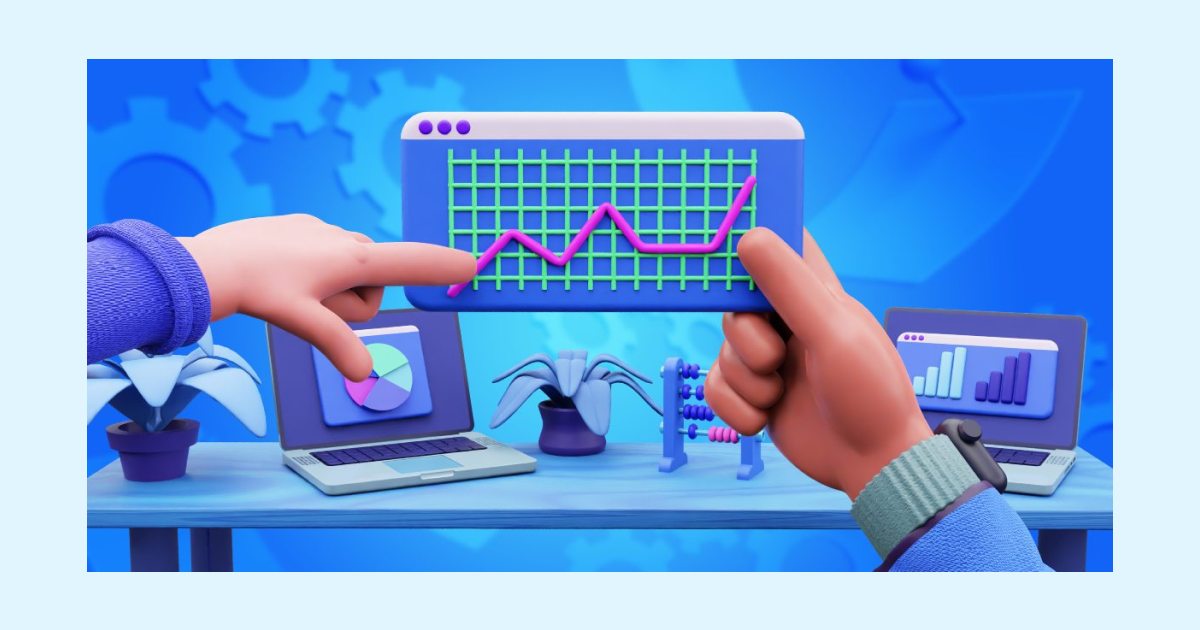Develop a team performance plan in four simple steps (templates included)
Last updated on: June 20, 2023
It is not uncommon for companies to face productivity issues that impact the overall output. More often than not, these problems can stem from poor team performance or lack of proper guidance. And team performance improvement plans are a reliable way of addressing and fixing any and all issues teams face.
Following are some guidelines on how to form a solid performance plan any team can follow, regardless of the industry you work in. We’ll also share useful resources and additional templates and reading material.
Table of Contents
Step 1: Learn about performance plans
Performance plans (or performance improvement plans) are documents created with the aim to improve the work of an individual, a team, or a company. They are constructed and laid out by team leaders/supervisors/managers, and oftentimes handed in to HR for assessment.
As a means of improving the workflow, performance plans are a tool for helping individuals and teams alike to overcome recurring issues. They outline goals that need to be achieved, in order for the person (or a team) to fix certain problems, or for an average worker to be viable for a raise.
💡For more thorough information and resources concerning performance plans in general, you can look into our guide: Everything About Performance Plans
What is a team performance plan?
When it comes to performance plans for individuals, the purpose for it is fairly straightforward – an employee has room for improvement and branching out of their skills. Together with them, their manager can lay out a plan on areas they can work on, which direction to take, and the necessary performance levels.
But when it comes to teams, the performance plans rely on collective goals and performance levels that they should reach together. This is more useful when you’re interested in measuring the output level of a department as a whole, and less in the impact of each individual employee.
Why is a team performance plan necessary?
A team performance plan can do wonders on an individual and company-level scale.
It helps you identify specific problem areas within the group, the desired level of improvement, and lays out guidelines that get the team to achieve the goals easier. It’s a step-by-step program that allows individuals to reach their full potential while working towards team goals. And as a result, the team’s improved productivity generates better output for company projects.
When to use a team performance plan?
There are several reasons why you would need or want to write out a team performance plan. The reasons below can be considered a viable ground for a performance improvement plan if they affect the whole team’s output and threaten to jeopardize the project more than once.
- The team is having difficulty meeting deadlines;
- The team members have problems relaying information to each other, stalling their workflow;
- There is a lack of internal organization;
- The team members appear to be dysfunctional and lack professional communication.
- The team seems lost and unsure of how their output affects the overall company goals.
Of course, there can be other ways in which teams show poorer performance. The important thing is to recognize them and their impact in the grand scheme of things. And with a proper workforce management system put in place, you can come to the source issue much quicker.
Step 2: Use three key factors to build a successful plan
Factor #1: Setting the right conditions
Before you begin, it’s important to check the conditions in which employees work. This is to avoid assumptions that a team is showing poorer performance because of their mistakes, when actually outside factors are affecting them. SO first and foremost, make sure everything on your end is fine.
For example:
- Is your team having trouble achieving deadlines more than once? Try to find out if maybe you’ve been pushing to meet client’s unrealistic demands. And as a result, the employees simply have a difficult time keeping up. It’s not a problem within the team, but an outside factor they need to adapt to.
- Does the team seem lackluster, or unmotivated? Make sure that the company goals are clearly set, and they’re aware of what is expected of them before you consider assessing their performance.
As they say: start with your own backyard. Make sure that you’ve done everything you can to give the team all the resources and conditions they require, before moving on. Here are some of the ways in which you can help the team on your end:
- 8 Ways to Increase Employee Productivity
- How to Track Team Productivity
- How to Get and Stay Motivated
Factor #2: Elements that make up a performance plan
As you go about making a performance plan, you need to ensure it covers several aspects. Without them, not only will it be more difficult to write it, but you also won’t get accurate data when the results come in.
Team performance plans can include (but is not limited to) some of the following aspects:
Team vision
This is the section where you outline the team’s vision, objectives, and mission, based on those of the company. Define what it is that the team needs to improve and how it will reflect on the company as a whole.
Defined goals and objectives
Once you have the vision pinpointed, you want to move on to goals and objectives.
Goals are the outcome you are working towards.
Objectives are specific actions you intend to take to achieve those goals.
Think of it as a pyramid: the vision is at the top, while goals are located beneath, represented in smaller, but still generalized statements. While objectives are at the bottom, as specific tiny steps that are tangible and measurable.
For example: Your aim is to improve transparency within the team.
- The goal would be to send in reports at the end of each day.
- The objectives would be:
- Track time on each task;
- Formulate a report by 4 PM;
- Send in the report by 5 PM.
When you’re working on setting goals and objectives, work closely with the whole team. They know the ins and outs of their job, and they are the ones who can give you the best estimates: how long a task needs to be finished, what kind of task formulation suits them best, how they communicate on a daily basis, etc.
With their help, you can create a detailed, accurate performance plan that will yield the best results.
💡 For more instructions on goals and objectives, you can read our piece on objectives and key results.
Defined Key Performance Indicators (KPIs)
With the objectives written down, you can start defining the KPIs. A KPI is a measurable value that lets you know how successfully the objective was reached. And thanks to it, you can monitor and modify the team’s objectives as necessary.
For example:
To see if you can improve the team’s transparency, you decide to task them with submitting work reports by 5 PM. However, you start to notice that not everyone’s reports get in on time. Some employees stay overtime and don’t finish their tasks for the day by 5 PM, while others forget to track their tasks throughout the day. In the light of this new development, your KPI target changes from:
KPI 1: Send work reports by 5 PM.
To:
KPI 1: Send work reports on finished tasks by 5 PM and add a note on in-progress tasks.
To keep track of all your KPIs and targets, it’s best to present them on a dashboard of sorts. There are different tools for creating them, but if it’s not an expense you can afford at the moment, you can opt for a graph or a chart. Just keep in mind the dashboard should show the data clearly, and with minimal graphics to be perfectly readable.
Timeframe for achieving goals
Every performance plan needs a set timeframe. It can be a month, three to six months, or even a year.
Even at this stage, you can ask your team to help you form a timeframe for certain aspects of the plan. After all, they know the best how long certain tasks and processes take. For example, how many tickets QA can do in an hour, or how much research and outreach the marketing team does to find reliable websites.
Along with their input, it becomes easier to form more accurate, reliable timelines down to the daily objectives.
Manager expectations and observations
Another important aspect that should be in the performance plan – your own expectations. You can write down the predictions based on the information you have so far. That way, you can compare the expectations and the end results after a while, to see whether the team is progressing, or if there is still room for improvement.
Additionally, it’s always a good idea to supplement the performance plan with observations as you go along. Spotting any details that boost or hinder the team’s performance will be an invaluable resource for the end analysis. Maybe they decided to work overtime to meet a deadline or had an impromptu meeting where they brainstormed a solution that will speed them up, for example.
And it can’t be stressed enough how motivating it is for the entire team to let them know that you’ve been following their progress closely. We’ll discuss more on that in the performance plan management section.
Factor #3: Consulting human resources
It’s worth mentioning that the HR department should be aware that you’re working on the performance plan from the very start. They can give more insight into whether it is the best course of action, or if a different method would suit the team better.
And after you create a draft of the team performance plan and you’re happy with it, don’t forget to consult human resources again. They should give the document a rundown to make sure everything is in order – that there are no unrealistic goals, or an overabundance of objectives, etc.
After all, the performance improvement shouldn’t come at the cost of the employee’s wellbeing.
Step 3: Write the performance plan in 6 easy points
Now that we’ve dissected all the aspects you can include in your performance plan, the end product should look something like this:
- Let HR and upper management know you wish to make a team performance plan and discuss its necessity and reasons for it
- Talk to the team’s about the issues they’re facing and vision for improvement
- Set goals and objectives based on the vision for improvement
- Define and agree on KPIs
- Agree on ways to monitor, review, and provide feedback
- Have HR assess the performance plan before finalizing it
As a document, the performance plan can be written in many different ways. There is no single way that is “correct”, and a simple Google search will verify it. That being said, the form below is an example of one performance plan.
| Team Performance Plan | |||
| Start Date | |||
| End Date | |||
| Vision/Aim of the performance plan | |||
| Objectives for Team Improvement | |||
| Objective | Employee | Start Date | End Date |
| 1. | |||
| 2. | |||
| Reviewing and Assessment Methods
(how will you track the plan’s implementation, the team’s progress: through team meetings, reports, etc.) |
|||
| Additional Support
(is there any additional support needed to reach the desired goals: courses, classes, resources?) |
|||
| Expected Outcome
(manager/supervisor‘s expectations on the outcome based on the data) |
|||
| Outcome if goals and objectives are not reached
(identify the consequences and further steps if the team fails to satisfy the standards set by the performance plan) |
|||
⏬ Download Performance plan template in .PDF
⏬ Download Performance plan template in .DOCX
Step 4: Manage and monitor team performance
During a performance plan implementation, monitoring the team comes down to following the plan’s progress, making timely changes and staying in contact with them. However, to manage them properly, you’ll need to cover more ground.
1. Be transparent
Performance improvement plans are somewhat notorious, as they make an individual’s (or in our case, a team’s) lack of performance official. A lot of employees will see it as a “last chance” before they are fired, and it gives them a lot of stress. As a result, they can’t see the performance plan for what it truly is: a way to boost performance and keep good employees in the company.
It is up to the managers to make that message clear: no one’s head is on the chopping block, and the performance plan is there to help you work together on achieving specific goals.
2. Be timely with feedback and reviews
Clearly set times and methods when you will provide feedback and updates to the team. Make sure to keep to the schedule defined in the performance plan. While weekly and monthly check-ins seem to be regular, there’s nothing wrong to do them bi-weekly or even daily in some cases.
You will get a feeling for the team’s workflow and tempo as time goes by. This will help you gauge how often they need you to check up on them. As a bonus, when the team sees you taking the performance plan seriously it will endorse the idea that both sides are working together towards a common goal.
3. Provide resources
As already mentioned in the performance plan template, you can help the team’s progress by giving them plenty of resources. Especially if some employees need additional coaching to catch up with the others.
There are several ways to provide resources and learning opportunities:
- Online courses
- In-company seminars (from their peers)
- Archive of appropriate literature (you can use tools like G-Drive, or Dropbox) that is online and shareable to everyone
- Collaboration with other, experienced team members
4. Communicate clearly
Before starting with the performance plan implementation
Make sure the team knows the performance improvement plan is there to provide guidance. The biggest fear employees have is that their jobs are at risk unless they outperform one another.
This can jeopardize the teamwork overall or increase tensions.
During the performance plan implementation
As you track the progress of the performance plan, the most important communication will be the feedback you provide. To make sure your comments concerning the team’s work are understood well, keep the following things in mind:
1. Give feedback on time
The team needs this kind of stability as they go through the performance plan. Timely meetings, whether through video chat, a call, or in person, go a long way for team confidence. Try not to make comments that are out of your ordinary feedback time – wait until the next meeting. In cases like these, predictability is good.
2. Make the feedback regular
It’s been proven time and time again that regular feedback boosts employee productivity. Scheduling them too few and far in between gives people less opportunity to fix certain mistakes in time.
Pencil in your schedule specific times when you will report back to the team, and try to stick to it as best as possible. Additionally, it doesn’t always have to be a meeting. You can send out written reports, have one on one chat conversations or brief video calls. Talk to the team and find out what kind of format suits them the best. Some fare better when the feedback isn’t in person, while others will probably thrive on a discussion.
3. Be tough, but fair
When you have some bad news to deliver, or you’ve noticed the team made a bigger mistake, refrain from opening with judgment or immediately discussing the mistake. Ask the team about their perspective of the situation, as it can help you gain some new information.
And after you discuss the issue at hand, offer clear, actionable steps on how to solve it. Or better yet – brainstorm with the employees and come to a solution together. In short, the team needs to know the gravity of their mistakes and setbacks, but they also need to be aware that you aren’t there to bury them deeper. You’re there to help them learn from their mistakes.
4. Be specific
Try not to go off on tangents. Long meetings or pages of reports are a bother to go through. Practice being concise, and addressing very specific things. In one of their articles on feedback, Harvard Business Review cited research that proved how a 5 to 1 ratio was the key to successful and productive feedback.
That means for every negative comment there are five positive ones.
This method keeps the employees less focused on berating themselves and others for mistakes, and more on solving the problem at hand.
5. Be available for assistance
Last, but not least on the performance improvement plan checklist – the manager’s availability. Your work doesn’t end when the performance improvement plan is written, approved, and signed by everyone.
The job extends to continuous monitoring of the team’s progress, tracking their results, and regularly giving comments and feedback. But even with all that, you shouldn’t really be concerned about the performance plan 24/7. Set specific hours during which the team members can contact you for a talk. In this way, they can let you know in time if any problems arise, and you won’t get any out-of-work-hour emails and calls.
Be ready for mediation, intervening with HR if needed, and providing all the necessary data when asked for it.
In Conclusion
Team performance improvement plans come with a whole new set of rules and considerations from the individual ones. They can vary in form, as they need to highlight the specific team’s issues and improvement scopes, depending on the industry and the company’s own vision and mission. These plans are made to address the team’s output as a whole, while never disregarding each individual member. With this article, we’ve highlighted the most important aspects to look out for, and we’ve provided a sample performance plan for a general idea. In discussions with the CEO and the HR department, and following our creating one for yourself should be a breeze.






